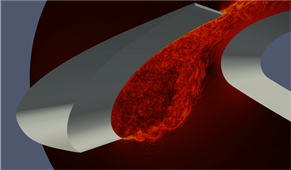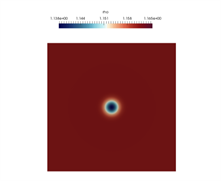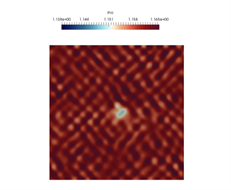“My answer is not accurate enough?” or “I need to increase my mesh resolution?” are the two of the most common statements that every CFD engineer asks when performing numerical flow simulations. Another common question is; “Can I make my CFD code run faster?”. Some of these questions were asked at ICOSAHOM 2018 held at Imperial College London, which focused on innovative numerical methods for fluid and structural mechanics, electromagnetics and climate modelling etc.
The ATI (Aerospace Technology Institute), has highlighted new legislative changes that are creating new opportunities, challenges and innovation for the sector. This is resulting in a focus on designing quieter, lighter and more efficient aircraft, with a move towards electrification and innovative propulsion systems.
Airbus is predicting that air traffic will almost double in the next 15 years. To support this growth, the environmental impact cannot be ignored, future aircraft must be fuel friendly, carbon neutral and expel less noise. In order to achieve this, more highly accurate and efficient modelling tools will be required to benefit from less physical testing.
Related to CFD, ICOSAHOM 2018 answered some of these questions by focusing on the use of high order methods (HOMs) applied across all processes such as preprocessing and high order mesh generation, solver techniques and post-processing tools that can be used across HPC platforms.
For the past 15-20 years, industrial CFD has reached a plateau, as most industrial standard CFD tools are based on the second order finite volume formulation used in conjunction with Reynolds Averaged Navier-Stokes (RANS) modelling, capable of handling complex geometries. These tools have proven to provide good results for steady state cruise flight design but they lack the ability to predict large unsteady separated flows. In order to tackle these challenges HOMs are an attractive proposition to industry due to their properties, such as low numerical dispersion and dissipation.
Figure 1 below highlights the properties of the high order Flux Reconstruction-Discontinuous Galerkin (FR-DG) method for the inviscid vortex transport problem. The left hand image represents the industry standard finite volume method, whereas the right hand image illustrates the solution obtained using high order FR-DG. After 43 periods, the solution is compared against the initial condition which is maintained easily by the fourth order FR-DG method; a good candidate for scale resolving simulations and noise computations since the waves are preserved for long distances. The other advantage of these methods is that they can be applied on relatively coarse meshes yet still retain some of the benefits when compared with the finite volume approach.
Figure 1. Density contours for the inviscid vortex transport problem using second order finite volume (left) and forth order FR-FG method (right)
This makes it ideal for high lift noise computation using CFD. A more complex example is shown in Figure 2 below, which illustrates the flow phenomena in the slat region of a high lift configuration during landing. By capturing the complex physics, the acoustic phenomena is better resolved and hence the noise impact can be improved by designing better wings.

High-Order CFD Technologies Webinar
The opportunity to hear about the development and industrialisation of HO CFD methods, gaining an appreciation of the current state of the art – as well as a view on the future capability. High-order CFD techniques are attracting considerable research interest, as they offer the potential for significantly more accurate fluid dynamics simulation – particularly in the age of many-core processors (such as GPUs).
CFMS is actively involved in testing the next generation of industrial CFD, disseminating new methods and tools that address some of the challenges highlighted above. HOMs has been successfully applied in the Hyperflux research programmes. For more information about HOMs, and to access HyperFlux software, contact CFMS.

